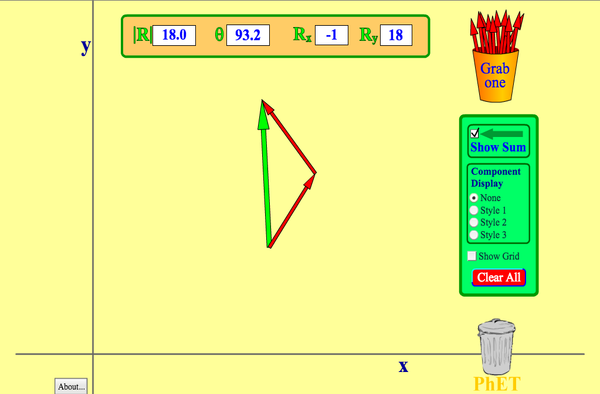Topics
Description
Explore vectors in 1D or 2D, and discover how vectors add together. Specify vectors in Cartesian or polar coordinates, and see the magnitude, angle, and components of each vector. Experiment with vector equations and compare vector sums and differences.
Sample Learning Goals
- Describe a vector in your own words
- Explain a method to add vectors
- Compare and contrast the component styles
- Decompose a vector into components
- Describe what happens to a vector when it is multiplied by a scalar
- Arrange vectors graphically to represent vector addition or subtraction
Standards Alignment
Common Core - Math
HSN-VM.A.1
(+) Recognize vector quantities as having both magnitude and direction. Represent vector quantities by directed line segments, and use appropriate symbols for vectors and their magnitudes (e.g., v, |v|, ||v||, v).
HSN-VM.A.2
(+) Find the components of a vector by subtracting the coordinates of an initial point from the coordinates of a terminal point.
HSN-VM.B.4
(+) Add and subtract vectors.
HSN-VM.B.4a
Add vectors end-to-end, component-wise, and by the parallelogram rule. Understand that the magnitude of a sum of two vectors is typically not the sum of the magnitudes.
HSN-VM.B.4b
Given two vectors in magnitude and direction form, determine the magnitude and direction of their sum.
Version 2.02










